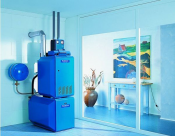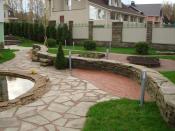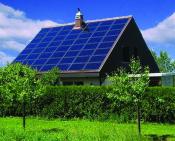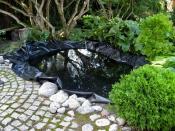Search
Login
How to make a pavilion for a pool with your own hands, types of pavilions for pools
Numerous owners of cottages and country houses have already acquired outdoor pools. However, most summer residents, when building a water tank, do not plan to build a pavilion for the pool, considering it an excess.
Over time, the desire to extend the swimming season, the complexity of the water purification process, and the inconvenience caused by the vagaries of nature make us think about creating a functional and convenient cover for the pool.
Content
- The need for a pavilion for the pool
- Types of pavilions for pools
- DIY pavilion construction
- Pool Pavilion Care
The need for a pavilion for the pool
A pool on a suburban area allows you to comfortably relax after a working day, cheer up and restore physical strength. Usually, outdoor pools are installed in the country, requiring regular cleaning of garden debris. In addition, the bathing period in such a pool is limited to the warm season.
To protect the water from pollution and the ability to use the pool, regardless of weather conditions, special canopies are installed.

The pool pavilion is a construction of steel or aluminum supports covered with a waterproof heat-insulating roofing material (polycarbonate or plexiglass).
The advantages of installing a pool pavilion are obvious:
- reliable protection against rain, wind and ultraviolet rays;
- less water is spent on heating water;
- the life of the pool is increased (reliable protection of the design and water supply systems in the winter);

- water quality improves (pollution level decreases);
- less chemicals needed to maintain proper water quality;
- increased safety of the outdoor pool for young children;

- reduction of heat loss during air cooling at night;
- pool maintenance is greatly simplified;
- long swimming season;
- the evaporation of water from the pool bowl is reduced.
As you can see, the arguments for the construction of the hinged structure are enough. It remains to determine the type of pavilion and carry out its high-quality installation.
Types of pavilions for pools
Stationary and telescopic pavilions
All protective pavilions can be divided into two main groups:
- stationary;
- sliding (telescopic).

Stationary Pavilions more like indoor pools. This design performs not just a protective function, but also is an independent room for the rest of the whole family. Usually the area of \u200b\u200bthe canopy is not limited only to the area above the pool, it provides a place to place chairs, sun loungers, tables and other attributes of relaxation. In a stationary pavilion, heating is often carried out, which allows the use of a pond year-round.

Sliding Pavilions for pools, these are structures from separate sections that move and free part of the pool (or the pool as a whole) for direct sunlight. Thus, the indoor pool can easily be transformed into a semi-outdoor or outdoor.
To move sections, rails are installed along the sides of the pool (some models can be moved with the help of single wheels). The number, height and shape of the mobile sections determine the functionality of the mobile pavilion for the pool.
Double-glazed window or polycarbonate: the choice of the pavilion according to the material of manufacture
If it is planned to use the room for the pool as a winter garden, a greenhouse or as a closed resting place, then it is necessary to build a stationary pavilion from a durable double-glazed window. Such a design will reliably protect against cold, wind and have a beautiful, presentable appearance.
If an additional double-glazed pavilion is insulated, the pool can also be used in the cold season.
However, the use of double-glazed windows as a roofing material is a rather costly undertaking, requiring additional financial investments to create a powerful steel frame and establish a reliable foundation.
A worthy alternative to double-glazed windows is the use of polycarbonate in the construction of canopies for pools. Translucent plastic plastic allows you to create a design of any complexity and shape.

Polycarbonate pool pavilions have the following characteristics:
- to carry out the installation by virtue of non-professionals;
- good light transmission;
- strength and lightness of construction;
- fire resistance;
- affordability;
- simplicity in leaving;
- long service life with competent construction (up to ten years).

The only drawback of using the material is that it is not possible to use the pool in winter. However, the majority of summer residents, vacationing outside the city only in the summer, prefer polycarbonate pavilions.
To cover the reservoir, it is better to use polycarbonate, 8 mm thick
Classification of pavilions by height
Based on the height of the structure, pavilions for pools are usually divided into two categories:
- low pavilions;
- high pavilions.
The choice of the height of the canopy will depend on the tasks that are assigned to the protective coating. Low pavilionsuitable for pools that are used irregularly and can stand idle for a long time.
The low pavilion (cover for the pool), about 1 meter high, performs the main function of protecting water from debris, rain and sun. Before swimming, the sections must be pushed apart.
Designs 2 meters high are made according to the greenhouse principle. A door is mounted at the end of the pavilion and, if desired, you can use the indoor pool without moving the sections. Free movement along the sides of the pool in this case is limited.

High protective pavilions (up to 3 meters high) form a complete room for relaxation, if the borders of the pavilion are larger than the bowl of the pool itself. This design will allow you to use the pool in any weather, without any restrictions.

Varieties of pavilions in shape and style
Pavilions can be installed on pools of any type and shape. The most common solution is a pavilion in the form of a horizontally located half cylinder divided into sections.

Rectangular, trapezoidal pavilions and constructions that successfully combine rectilinear and arched elements (asymmetric structures) are popular.

It is believed that in rectangular shelters with a curved upper part, the usable space is used most effectively. In addition, snow on the roof with this form will not accumulate, which will increase the strength and durability of the structure.

Spherical canopies equipped with a pair of sliding panels are ideal for round pools. The dome of the structure is well ventilated, and under the tent it is quite possible to place the necessary furniture for relaxation.
Metal and plastic materials for the manufacture of pavilions dictate the basic hi-tech shelter style. The simplicity of the structure is compensated by the brilliance emanating from the water surface, and the mobility of the sections adds dynamism to the entire structure.

If the owner of the pool prefers a more naturalistic style, then in the manufacture of the frame you can use durable metal plastic that looks like wood, and replace the transparent, glittering polycarbonate with matte. This will not affect the properties of the pavilion, but outwardly it will seem softer and more comfortable.
DIY pavilion construction
Preparatory work and recommendations
Many summer residents have a desire to independently build a pavilion for the pool, because the purchase and installation of a finished design is an expensive pleasure.

When starting the construction of the pavilion, it is necessary to take into account some recommendations:
- the pavilion is installed on a special base (the length and width of the base should be 5-7 cm larger than the dimensions of the structure being built);
- the weight of the finished structure can reach 5 tons, so the thickness of the concrete base should be at least 50 cm;
- the width of the base should be based on the dimensions of the guide tires;
- to protect the concrete base from moisture, it is desirable to cover it with porcelain stoneware or tiles;
- special attention should be paid to sealing the joints of polycarbonate (you can use silicone colorless sealant or a special tape).

For work you will need the following materials and tools:
- profile pipe of rectangular or square section;
- welding machine;
- polycarbonate sheets;
- fasteners;
- concrete mix;
- shovel;
- screwdriver;
- jigsaw;
- concrete mixer.
Polycarbonate can be replaced with thick polyethylene, this will save money, but the appearance and performance of the pavilion will deteriorate.
If there is a rest area with tiles around the pool, you can immediately proceed with the installation of the structure. Otherwise, it is necessary to fill the foundation. Concrete is reinforced laid out square cells (20 * 20 cm).
The foundation should protrude 7 cm forward from the structure, this will allow to reliably hold the entire cargo of the pavilion
Wireframing
The main arcs of the frame must be made of a wide pipe, on which two adjacent polycarbonate sheets will be attached. The length of the arc is taken from the calculation: 1 pool height (for low pavilions 2 meters) + pool width.
Through the pool, profile pipes are pulled in the form of arches. It is difficult to independently bend the arcs independently, therefore it is better to order them from specialists. Those who skillfully work with the welding machine can experiment, and bend the arc. To do this, in the part of the pipe that should be bent, it is necessary to cut a circular saw on three sides. Fix the edges of the pipe in a vice and bend gently. After that, all cuts must be welded and sanded.

We fix the base of the frame to the foundation with bolts, and install the arc. If the pavilion is collapsible, it is necessary to fix the arcs with bolts and nuts, and if it is collapsible, welding can be used.
The arcs extend 1 meter apart. Between arcs it is necessary to establish stiffeners. They can be staggered: between the 1st and 2nd arcs there are two edges, between the 2nd and 3rd arcs three, then again two, etc. Such an amount of arcs will be enough for laying polycarbonate and structural stability.
After assembly, the frame must be treated with an anti-corrosion agent and painted in the desired color.
Roofing
On polycarbonate sheets, it is necessary to mark the places and drill holes through which the material will be attached to the profile pipes. The width of the hole should be slightly larger than the size of the screws, since you need to leave a margin for the expansion of polycarbonate under the influence of heat. The frame is sheathed with roofing material.

When fastening polycarbonate sheets with screws, galvanized washers must be placed under the caps to cover the holes

The joints and fastenings of materials must be treated with sealant, and the concrete base should be finished with tiles or porcelain.
Pool Pavilion Care
Maintenance of the polycarbonate pavilion does not require special efforts, since this material has a special coating that prevents the appearance of stains and stains. In winter, it is necessary to regularly clear the snow from the pavilion.

Every year it is necessary to inspect the metal frame of the structure for signs of corrosion, such as: bloating or swelling of paint, the appearance of rust spots.
The consequences of rust on the structural elements of the building can be very sad from the deterioration of the appearance of the pavilion to its complete destruction. Therefore, it is important to take measures in time and eliminate traces of corrosion. The work is carried out in two stages:
- cleaning of the damaged area;
- material processing (filling, priming and painting).
If the damage is serious enough (through or have deep covering corrosion zones), then replace the damaged area.
In the specialized market, pavilions for pools are represented by manufacturers from different countries. The most expensive German designs, whose suppliers are responsible for the quality of the goods. Budget option Chinese pavilions. The structures of Russian companies occupy the golden mean in the price-quality category.

The choice of ready-made pavilions is impressive, and pricing sometimes frightens off potential buyers. Therefore, the construction of a pavilion for the pool with your own hands can be the best option for summer residents who seek to improve their pond.





